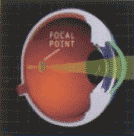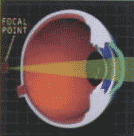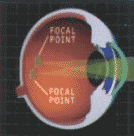 Annual Eye Exams are Crucial from Pediatric to Senior
Annual Eye Exams are Crucial from Pediatric to Senior
Did you Know?
Half of all blindness can be prevented, yet the number of people suffering vision loss continues to increase. Having an annual eye exam is crucial in protecting your and your family’s eyesight. These annual exams allow your doctor to detect changes in the front of your eye so alterations can be made to your eyeglass or contact lens prescription. However, your doctor also needs to look at the back of your eye, the retina, to check that it is healthy and not damaged or showing signs of disease. Many eye diseases, if detected early, can be treated successfully without total vision loss.
Regular eye care, by means of annual eye exams can uncover both eye and systemic (entire body) problems. If these problems are left untreated, there is a risk of disability, suffering, and loss of productivity. The goals of an eye exam are to avoid or minimize adverse effects on the eye and vision, as well as to identify potential problems early in order to prevent any problems from getting worse, and potentially leading to vision loss.
The most common eye condition is refractive error (the need to correct the vision of the eye with glasses). The three most common refractive errors are myopia (nearsightedness) which affects an estimated 25% of the population, hyperopia (farsightedness) and astigmatism (an uneven curvature of the cornea that causes a distortion in vision) which affects an estimated 53-63% of the population.
Presbyopia, which is the age-related loss of accommodation (resulting in the need for bifocals), starts between the ages of 38-45 years, and affects virtually 100% of the population by around 50 years. It is estimated that 52% of the US population wears corrective lenses. Cataracts (loss of clarity of the lens inside the eye) is estimated to affect 42% of individuals between the ages of 52-64 years. However, only about 5% of these people suffer significant loss of vision. Nearly everyone develops some degree of cataracts by age 75-85 years. Cataracts, if caught early are surgically removed, generally as an outpatient with outstanding results.
In addition, there are various retinal diseases and conditions of the eye which result in loss of vision. There are also diseases such as diabetes and high blood pressure which can be discovered by examining the eyes. Side effects of drugs may also sometimes be observed during eye examinations. Again, early detection is the key factor in treatment and sight preservation. So, protect you and your family’s vision and overall health by having annual eye exams.
 Children’s Eye Care Health
Children’s Eye Care Health
Many vision problems begin at an early age in childhood, so it’s important for children to receive proper eye care from the time they are infants. Early detection and treatment are essential to preventing conditions that could potentially cause problems or vision loss.
In the United States, more than 12.1 million school-age children have some form of vision problem, but as few as 14% of children receive an eye exam before entering first grade.* In addition, many, if not most, schools have no regular screening program in place and even when mandated by law, screenings are often not done. Poor eyesight can have a significant adverse affect on a child’s educational and social performance.
Many vision problems begin at an early age, so it is important for children to receive proper eye care. Early detection and treatment are essential in preventing conditions that could potentially cause problems or permanent vision loss. The American Optometric Association recommends that every child has a professional eye exam shortly after birth, by six months of age and again just prior to entering school. Once in school, children should receive annual eye exams.
CLICK HERE FOR IMPORTANT INFORMATION ABOUT YOUR CHILD’S VISION.
* Prevent Blindness America
|
Common Vision Conditions
|
|
 |
Myopia (Near sightedness) The eye’s refracting power is too strong for the length of the eyeball. This results in the light not reaching the retina and blurry vision is perceived in the distance. |
 |
Hyperopia (Far sightedness) The eye’s refracting power is too weak for the length of the eyeball resulting in light focusing behind the retina. Blurry vision is perceived near and maybe at far. When we are younger, our visual system easily overcomes this condition for distance objects and symptoms are not noticed. However, it takes more work from our visual system to view objects up close so we are usually symptomatic at near. As we age, our visual system is not robust enough to overcome our refractive error and blur is noticed more often. Have you ever wondered why you never had to where glasses your whole life until now? |
 |
Astigmatism The main refracting surface of the eye is the cornea. People with astigmatism have corneas that are shaped like a football (ellipse) rather than a perfect sphere like a basketball. This causes a distortion of the light that hits the retina creating blur in all distances. |
| Presbyopia (arms are too short) As we age, our visual system becomes unable to accommodate for objects up close. There are many theories to this inevitable condition. It could be that our lens becomes too thick for the eye muscles to move or our eye muscles may deteriorate and become too weak to move the lens. |
|
| Cataract Our lens which is normally transparent develops a clouding resulting in a decreased transmittance of light. No one knows the mechanism for this change but it has been suggested that advancing age, hereditary, injury, disease, excessive ultraviolet exposure, cigarette smoking, and the use of certain medications are all risk factors. It is most commonly found in the elderly but may be seen in younger people as well. Some symptoms that are experienced include glare especially with oncoming headlights, trouble with night vision, reduced contrast and reduced color perception. When the cataract develops to the point that it interferes with your daily activities your optometric care provider can refer you to an eye surgeon who may recommend surgery. After surgery is performed, your optometric care provider can continue with your eye care needs. For more information, search the American Optometric Associations web site at www.aoanet.org. |
|
